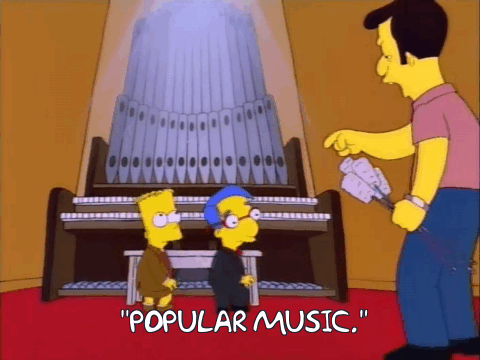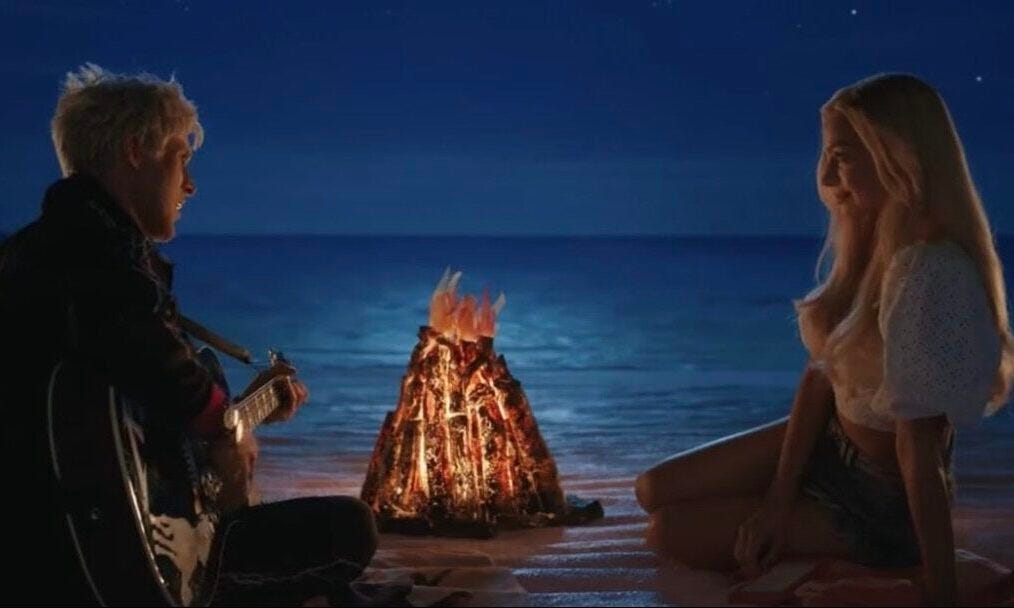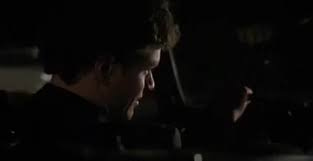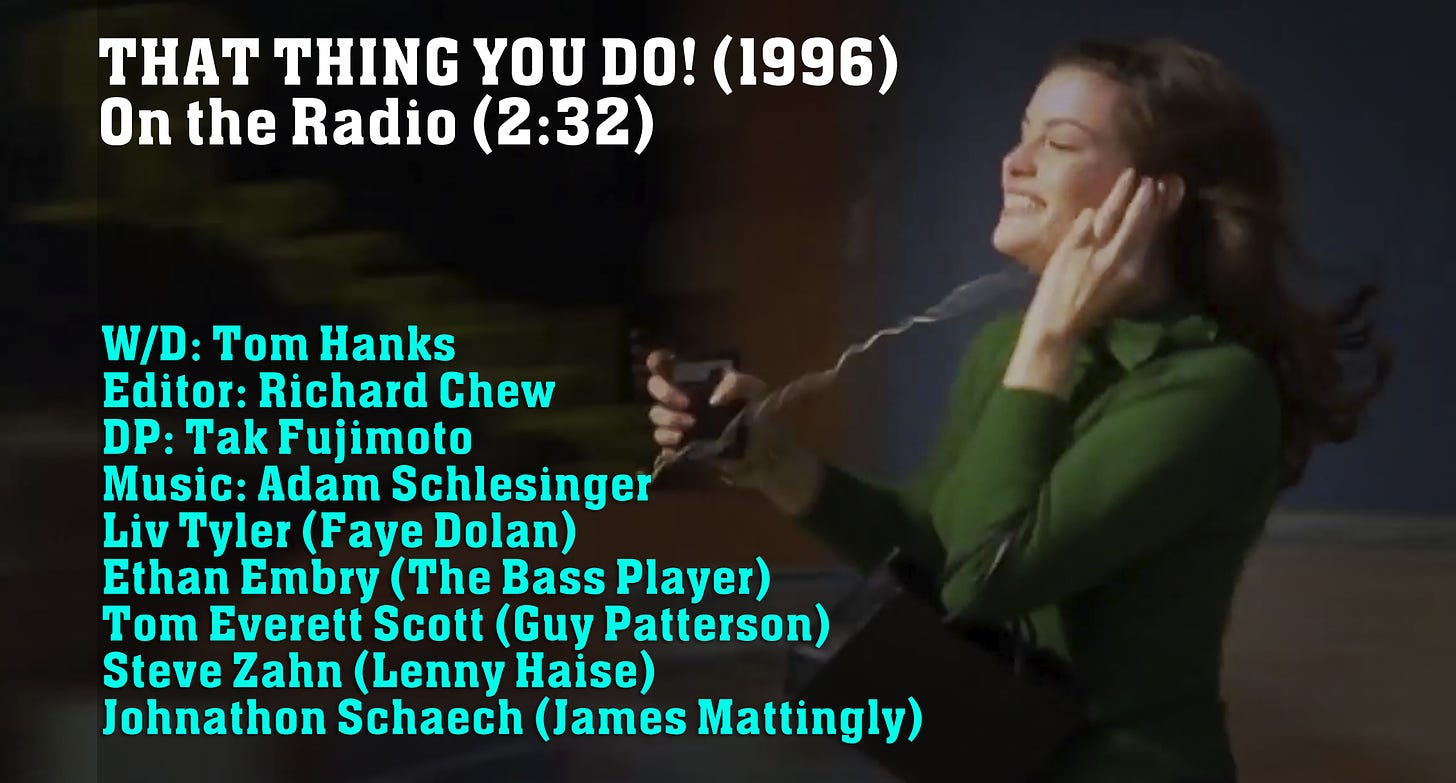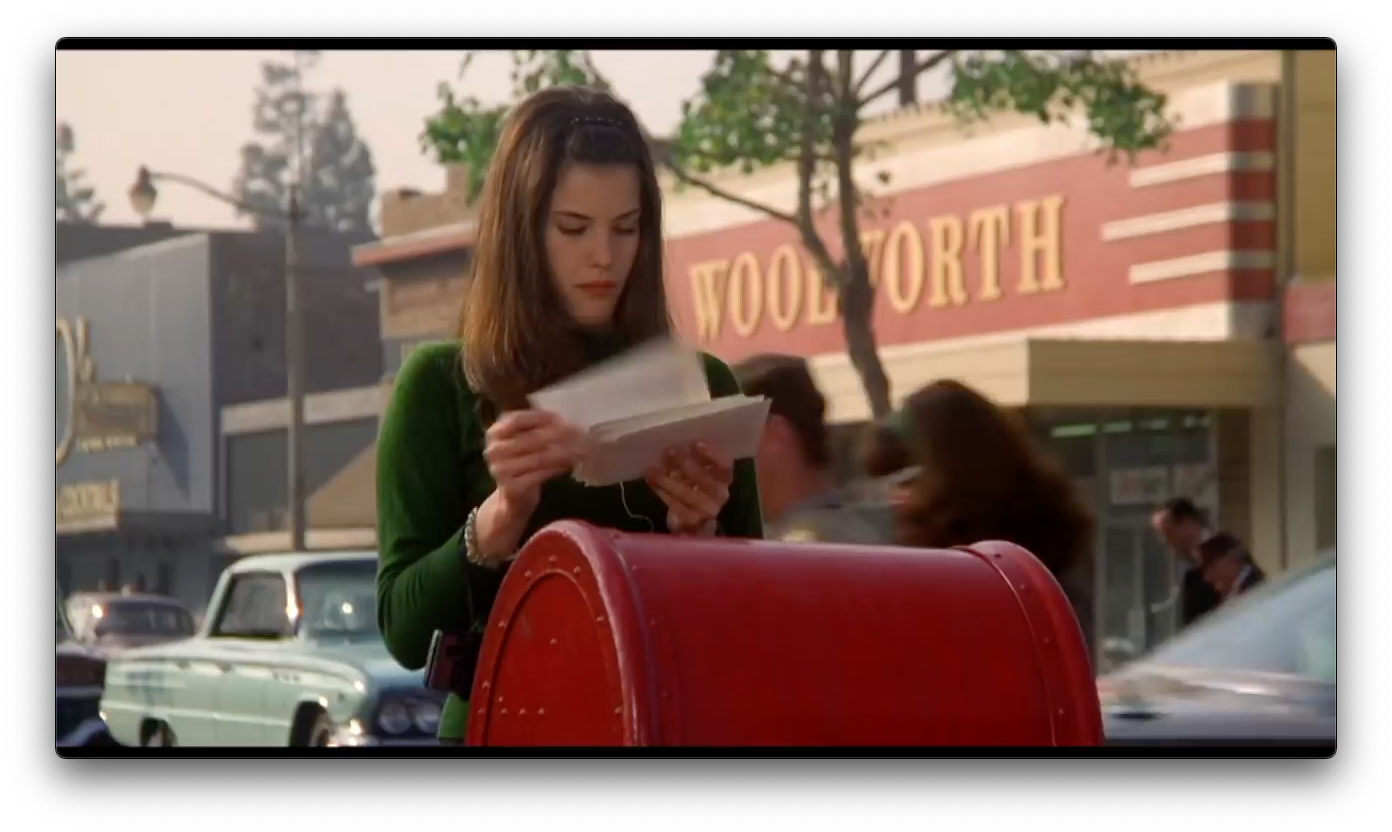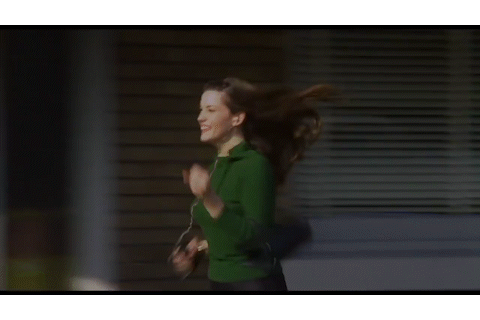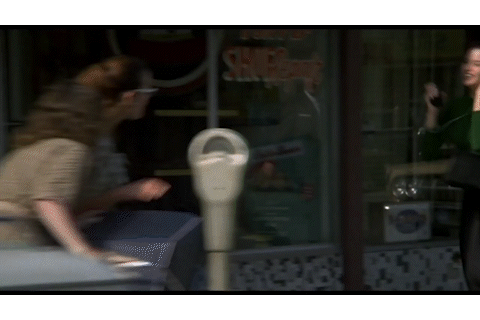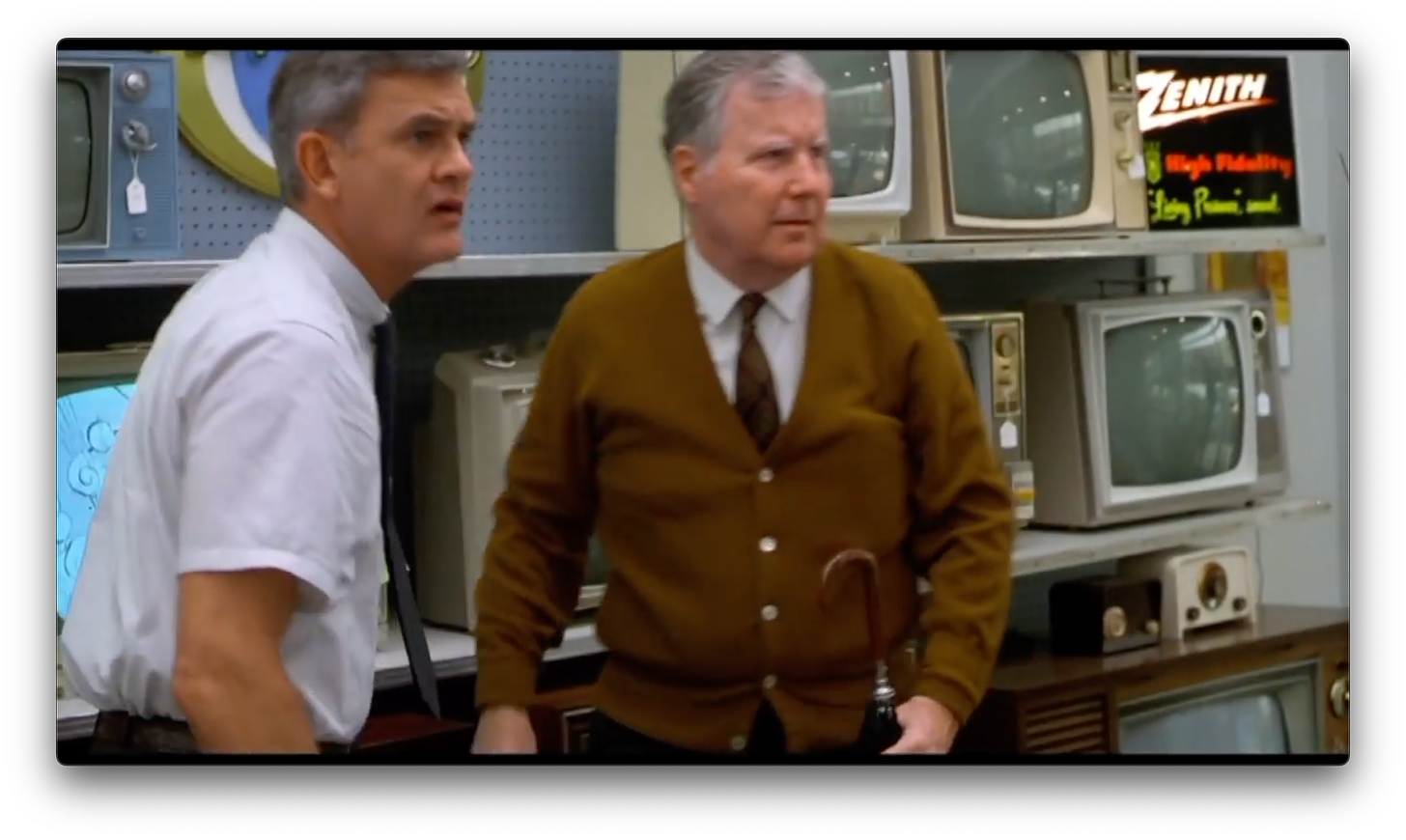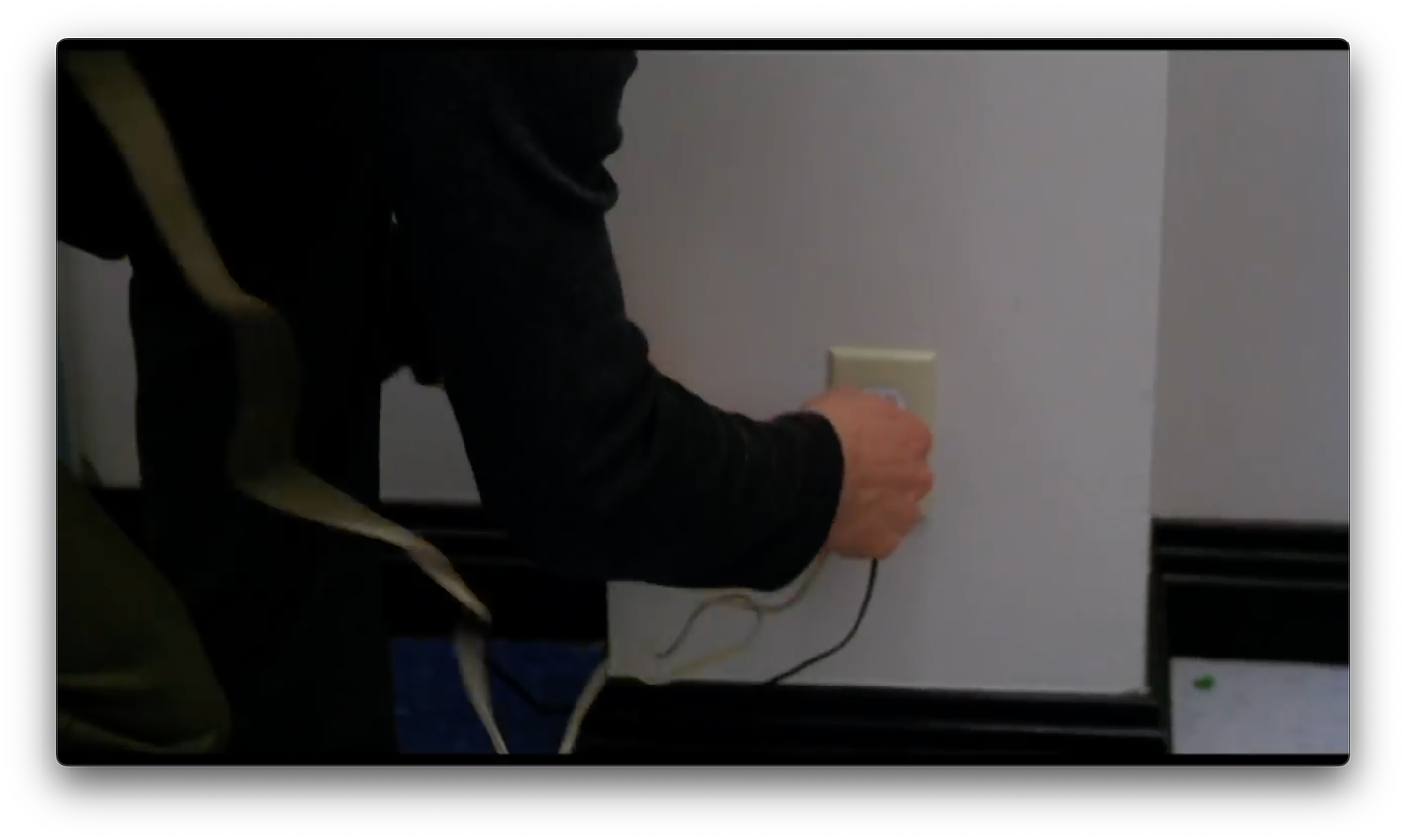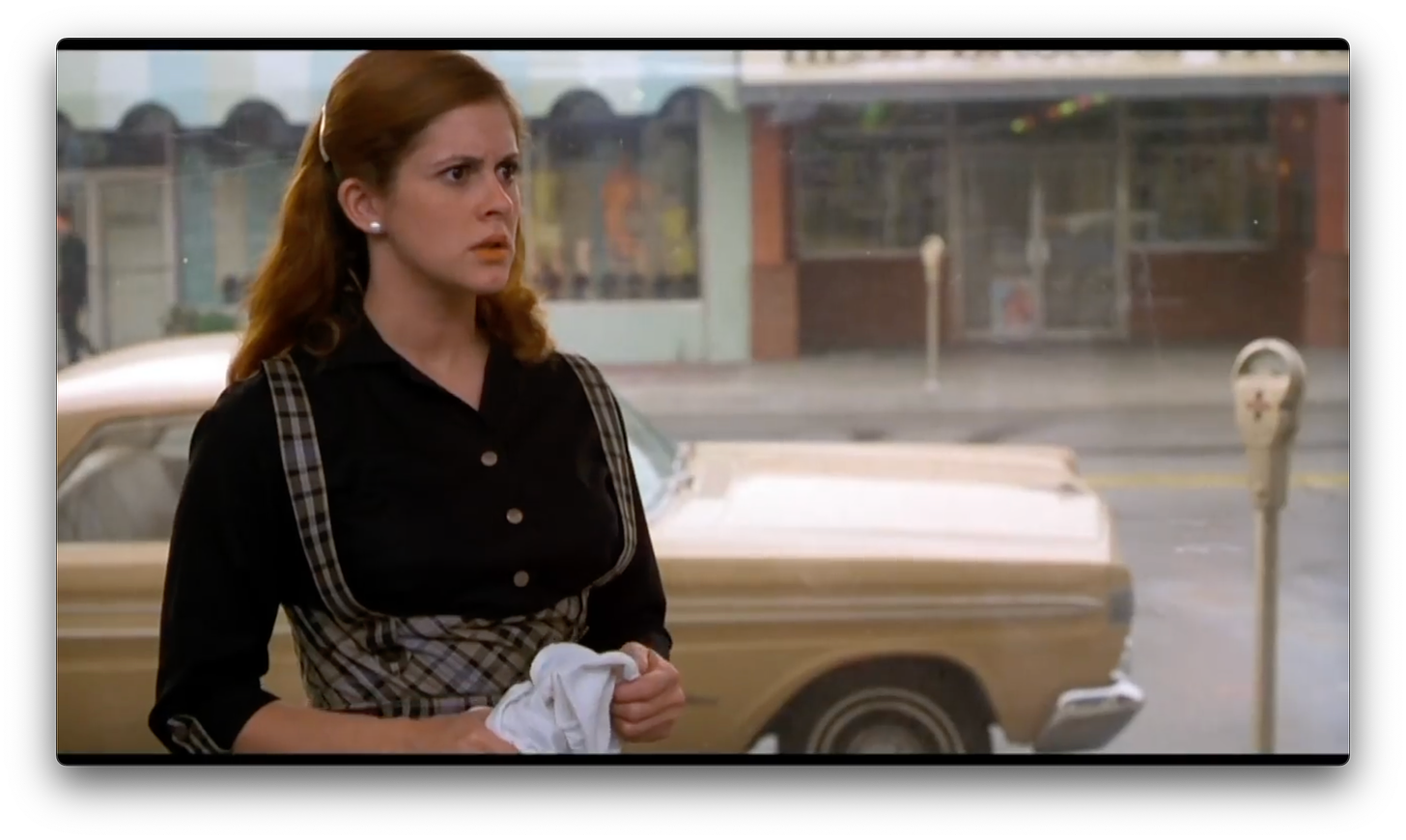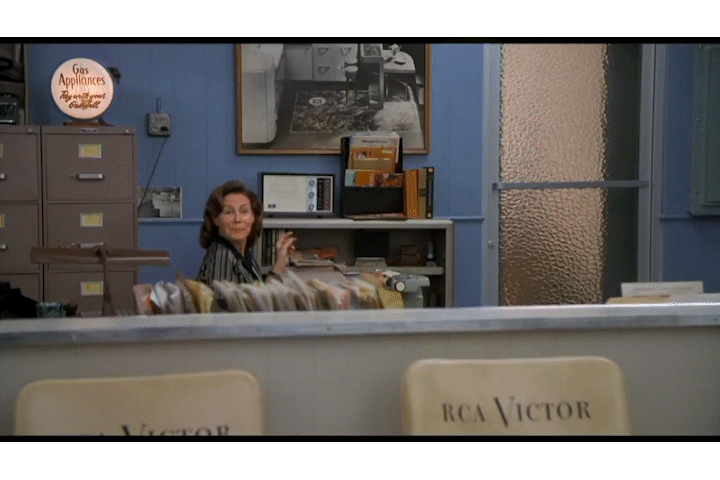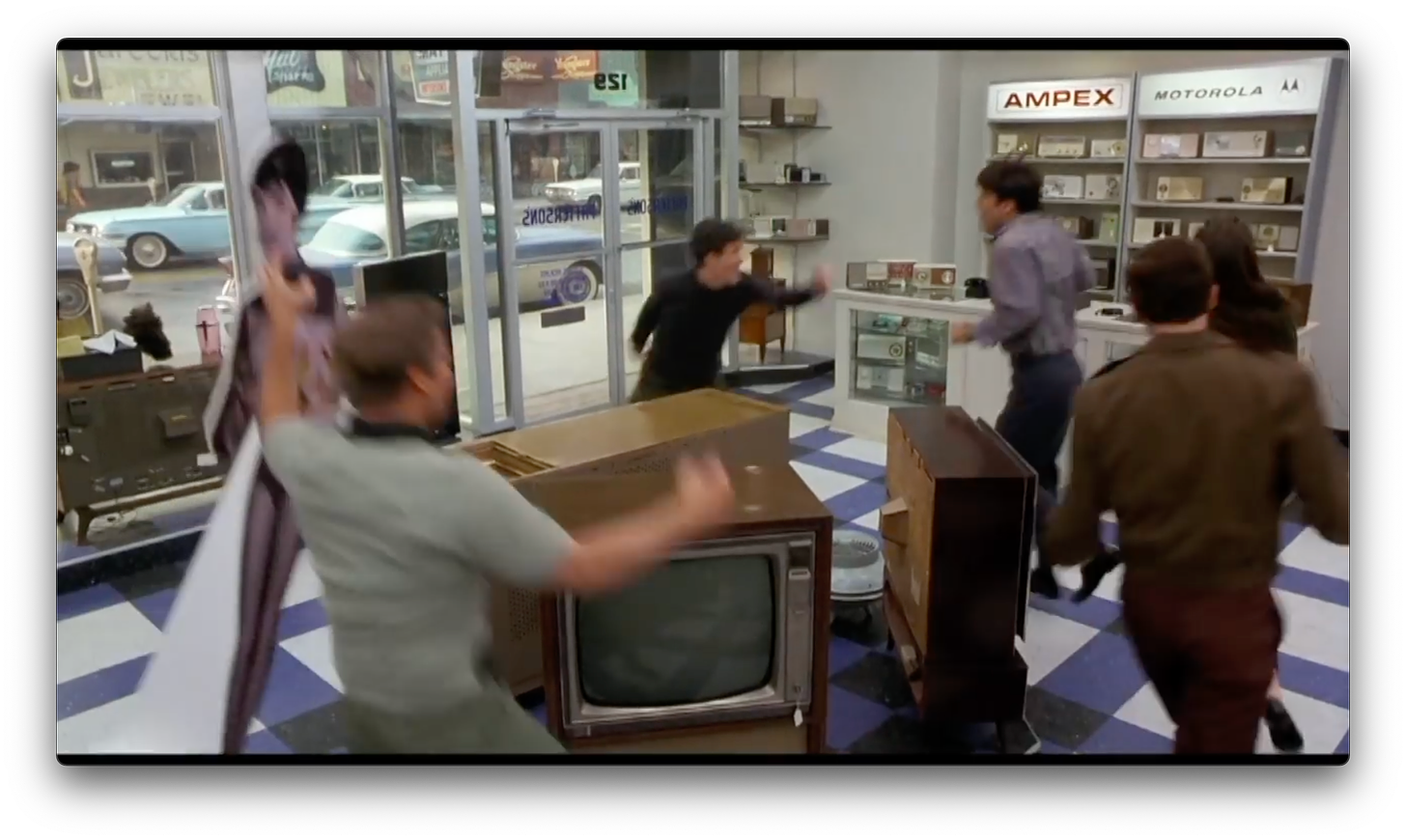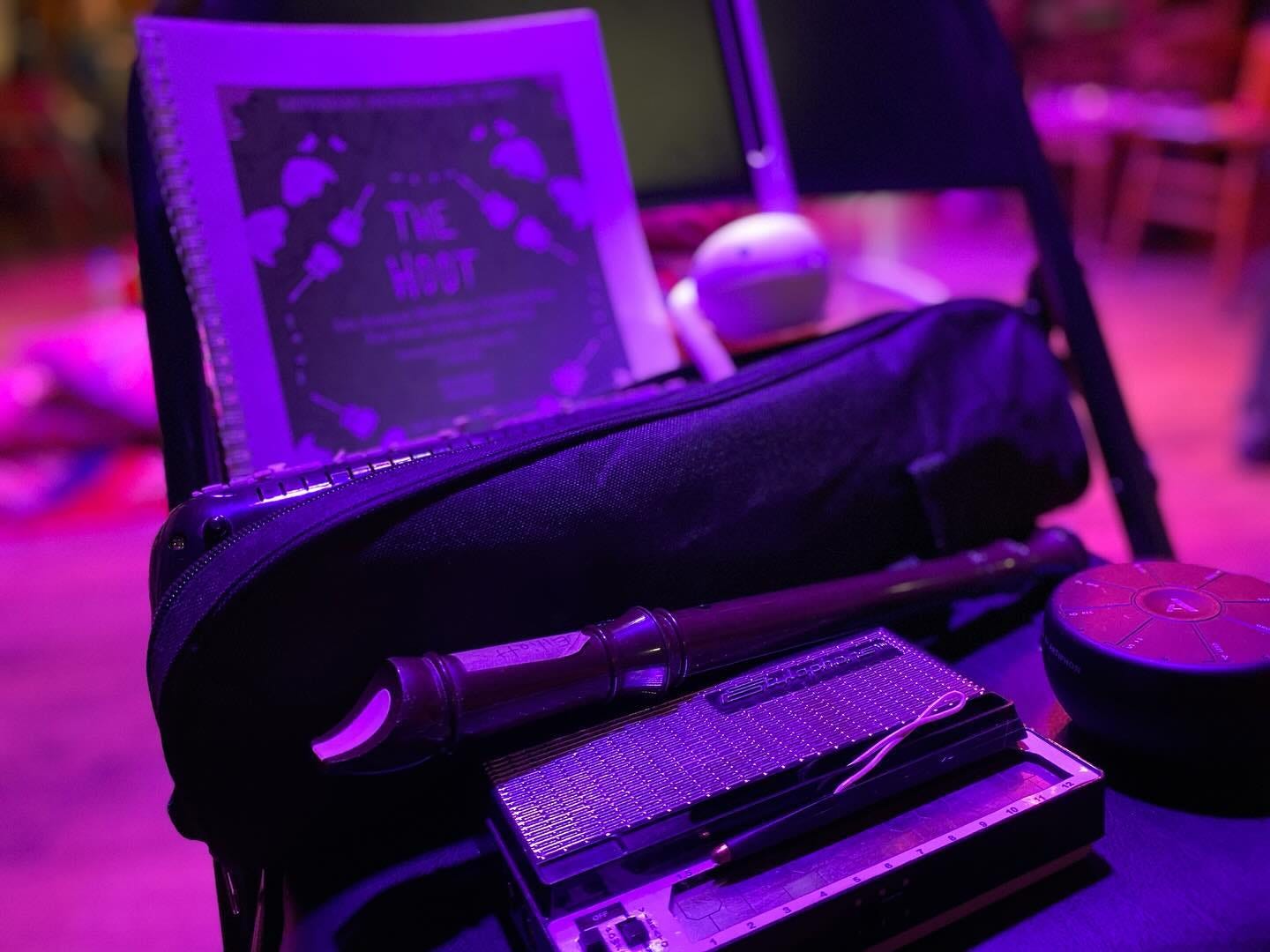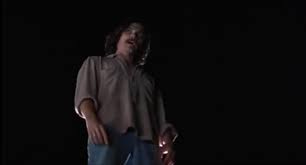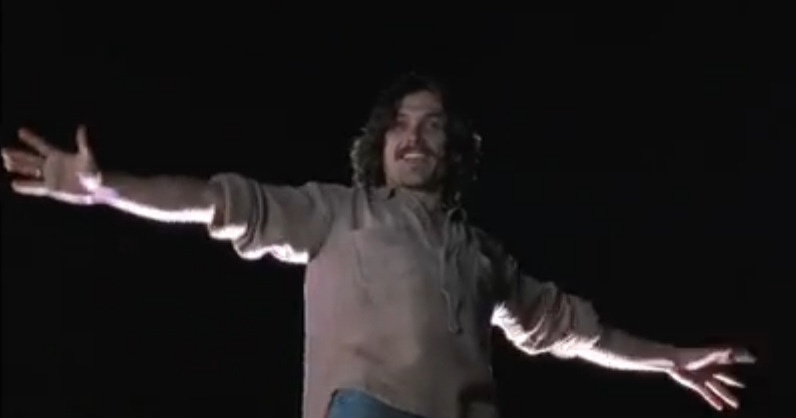As tends to be the case, this newsletter will start with some personal reflections, observations and reminiscences, so if you’d like to go directly to the meat of the subject, please feel free to jump to II. Hey, Here’s Something New …
I. You Still Playing Percussion?
Over the 4th of July Weekend, 1991, my family made a critical discovery in the basement of the house I’d lived in for all of my nearly 15 years: my uncle’s tenor guitar from the 1960s.1
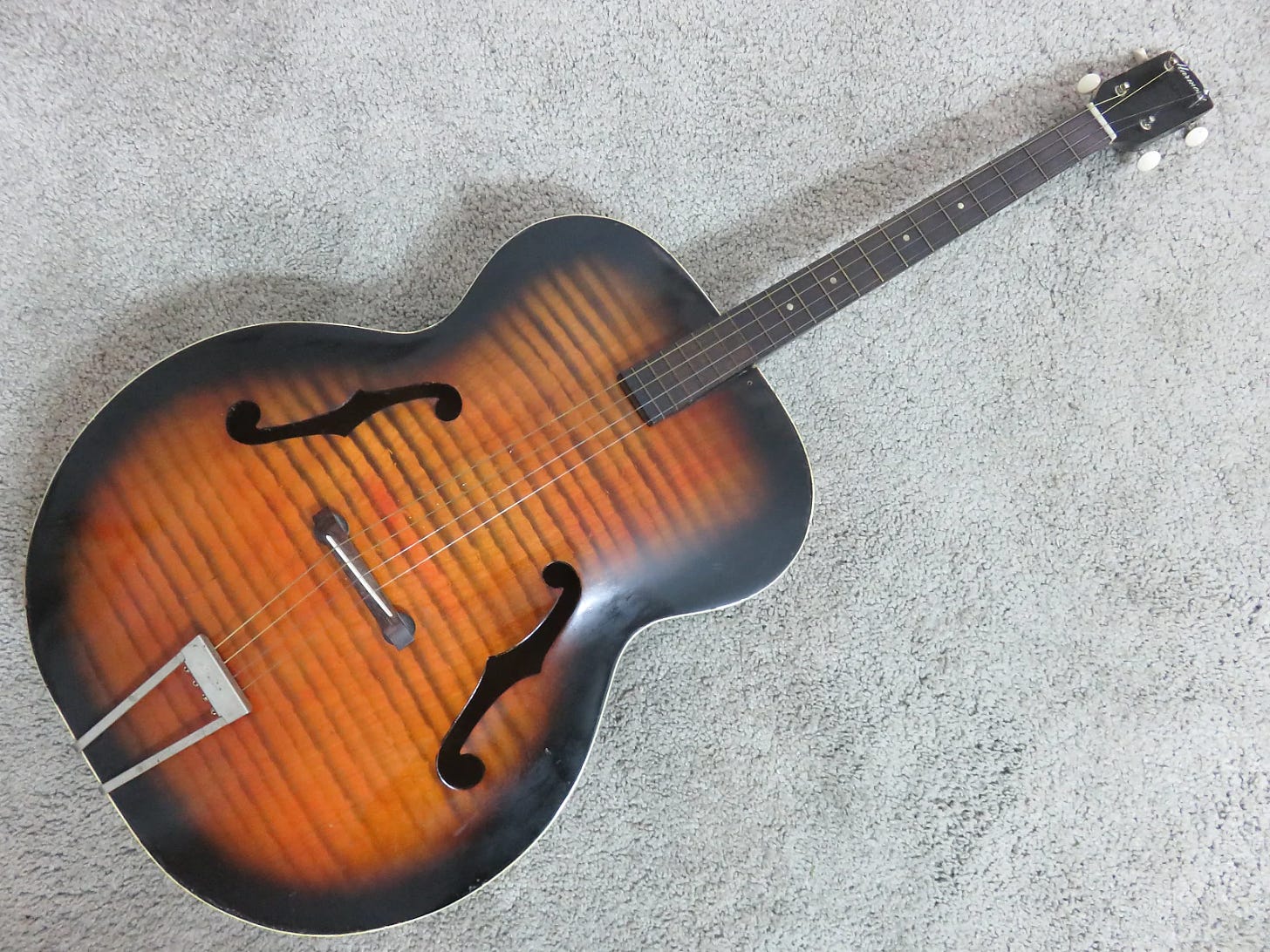
It was musty from its time in the basement, but beautiful, though to be fair, whatever it looked like, it would have looked as beautiful as a fulfilled promise to me.
See, I grew up in a cast album / soundtrack-heavy house that didn’t really go in for anything harder than Sting or Billy Joel, with those being about the only artists newer than The Beatles or Joni Mitchell.2 I didn’t grow up in Footloose, just a lot of stuff wasn’t my parents’ vibe.
But the year before, my lifelong friend Jordan Hirsch played Tommy by The Who for me at summer camp, and everything had shifted. I immediately asked my parents for guitar lessons; the memory of my two abortive attempts3 at piano lessons fresh in their mind, they balked at the expense4.
Now, it turned out, there was an axe (of sorts, good enough) already in my house, which my uncle had little interest carting back to St. Louis5, so as far as I was concerned, it was on.
The trouble is, you look at a piano, the low notes are on the left, and the high notes are on the right, and it all visually makes sense. You look at a guitar, it’s an inscrutable warren of seemingly-randomly-tuned strings, unevenly spaced frets, and curiously placed fretboard dots that Pete Townshend can turn into an assault rifle. On top of which, you tap a key on a piano, it makes a sound; tap hard, it’s loud, tap soft, it’s quiet. On a guitar, you’ve gotta depress the string in the fret with all your might to come close to making a sound, let alone music.
I used a couple of the chord diagrams in the music books in our piano bench just to get started - a G-chord (a one-fingered chord on a tenor; three fingers on a regular-degular guitar) became my Rosetta Stone. From there, I learned that if you pressed these other frets (later, I learned a C-chord), and then these others (a D), you could play a not-bad-for-noodling-out “Free Fallin’”.6
From there, learning to play music begat seeking out listening to more music, which in turn begat learning to play that music, and on and on for about the fifteen years that followed. I was in a couple of high school bands, and never missed a talent show or house party that had the potential to get out my guitar7.
I’m a great believer in the no-official-training, fuck-around skillset, and this was the beginning of that dogma for me.
At the same time, I was a choir kid (Choir President, ‘93-94, nbd) and a theater kid (see above re: cast albums), so performing was big for me, performing music doubly so.
There’s something genuinely miraculous about the fact that, among all forms of artistic expression, music is the one we can create without any peripherals.
Wanna paint? Hope you’ve got supplies. Wanna sculpt? Need a chisel and a medium. Wanna sing? Like Buddy the Elf says, just talk louder and longer and move your voice up and down.
Making music is native to us - it’s already in us - and making music with other people is about as good as it gets.
I realize now that, when it became clear how un-monetizable a path it was for me, I let it drop. That was a mistake.
II. Hey, Here’s Something New
We all love Tom Hanks, right? I mean, that’s his whole deal - whether we love Tom Hanks or not, he’s Tom Hanks, America’s Loved Man. In a career that has swung from sitcom drag (Bosom Buddies), to big-screen mermaid comedy (Splash), to back-to-back Oscars (deserved for Philadelphia; we don’t still have to talk about Forest Gump, do we?), to a shorthand for august, heartfelt boomer Americana (Band of Brothers, The Pacific, Masters of the Air).
Among his accolades and achievements, though, are his surprisingly-numerous or surprisingly-few (depending on your perspective) directing credits. TV directing rarely feels personal, so focusing instead on his two features, only one of his two features bears anything like an authorial stamp8.
Released in the fall of 1996, That Thing You Do! is Hanks’s lone effort as both writer and director, and it feels organically grown from his affability as performer and personality, steeped in enough lived-experience to make it chummy without feeling obsessive or “you had to be there” exclusionary. Maybe the clearest reflection of Hanks’s nice-guy vibe is that this is a movie without a bad guy, no matter how close anybody skates to it9.
Set in the summer of 1964, That Thing You Do! of course lives in the kaiju footprint of The Beatles10, but on an appropriately smaller scale. Tracking the course of The Wonders, an Erie, PA garage band’s meteoric rise (and whiplash fall) on the strength of their breakout single, the movie visits a critical moment in the rise of the teenager - in hysteria, in buying power, in culture that caters to them - and feels saturated in the more pleasant parts of that moment.
That Thing You Do! made $34MM globally on a $26MM budget, and Golden Globe and Oscar noms for its titular earworm, penned by the deeply missed Adam Schlesinger (Fountains of Wayne, whose debut record dropped three days before That Thing You Do!).
The song is a miracle, a platonic ideal pastiche of its time period that achieves the unparalleled feat of being repeated eleven times in part or entirety over the course of the movie without becoming tiresome11. It’s a testament to Schlesinger’s skill as a songwriter, to make something at once a comment on a genre as well as a sterling example of it12.
The song tracks a neat evolution across the course of the movie - first as a lovelorn slow-jam by band frontman James Mattingly III (a fittingly intense Johnathan Schaech) which gun-for-hire drummer Guy Patterson (delightful Hanks avatar Tom Everett Scott) upgrades to a thrillingly too-fast banger on the spur of the moment at a local talent show. When the song decisively wins the crowd over, Jimmy acquiesces to keeping it an up-tempo number, which the band polishes into a shiny hip-shaker during their residency at an airport-adjacent pizza joint.
Their church-basement 45 finds its way to manager Phil Horace (Chris Ellis) who signs the band to a contract on the condition he can get the song on the radio. Ellis, typically a warm figure (his Deke Slayton in Apollo 13 made him a Hanks recurring player), plays Horace with just enough detachment to leave you wondering if he’s on the level, or trying to get one over on the boys.
It’s that modicum of uncertainty - the closest that this 1h 47m charm-offensive gets to “suspense” - that makes the payoff all the sweeter, an early high-point for the movie, and, not to damn with faint praise, the best-directed sequence of Hanks’s career.
The sequence opens with a few key characters around town - Jimmy’s girlfriend Faye Dolan (Liv Tyler), in line at a mailbox; the nameless Bass Player (Ethan Embry) buying a jacket at the Army Surplus (in a bit of foreshadowing), and Guy, zoned out at his father’s hardware and appliance store - each with a transistor radio and earpiece, glued to the radio.
Faye, terminally in love with the self-serious Jimmy, is positioned early on as the soul of the band - while not technically a band member, it’s Faye who coins their first name, the frequently mispronounced Oneders13 - so it’s deliberate and fitting that she’s our lens for the band’s first taste of success.
In a few short seconds, Faye goes from distracted to stunned - too much so to even remember to take the stamp off her tongue, in a charming bit of detail - to thrilled to elated to manic, in as clear a distillation of Beatlemania and its tangential maladies as has ever made it to the screen.
And, look, you don’t need me telling you that Liv Tyler has a good face14, and while I mean it in the least-creeper / most-due-respect way possible, I’m saying that her face - open, expressive - is the perfect vehicle for the excitement of the moment.15
Faye, in her excitement, runs off to find the rest of the band … then darts back in to mail the letters. I told you this movie was a charm-offensive.
Hanks leans into the A Hard Day’s Night of it all, replacing the black and white mania of the original with Faye’s sun-drenched, technicolor joy. DP Tak Fujimoto’s lens stays locked on Faye’s plane - foreground and background a dizzying blur while Faye moves in her own supersonic bubble, by herself even as she shares her band with the world.
The song drops away as we reconnect with the Bass Player, talk radio in his ear. It’s a throwaway gag, to be sure, but the fact that they’ve each planned to listen to a different station to broaden their search feels both Scooby-gang charming and lived-in/authentic.
A fun bit of sound design presages Faye’s arrival with the filtering-in of the song from her earpiece, and her unbroken shriek. The staging is fun, keeping Faye’s back to the camera so we can experience the Bass Player’s initial shock and elation, much as we got to with Faye’s.
Hanks and editor Richard Chew keep the momentum snowballing, returning to the Hard Day’s Night shot, now with the Bass Player joining Faye.
Here, Fujimoto takes a 3/4 angle (contrasting the profile of Faye’s solo-run shot), giving us more of their faces, more directly hooking us into their exuberance.
Of note, Hanks, Fujimoto and Chew keep the screen direction consistent, from right to left, throughout most of the sequence; by utilizing conventional framing / camera moves and measured cutting, Hanks allows the performers to generate the excitement, which favors humanity over technique.
The snowball arrives - scream-first, no less - at Guy’s job, and for the third time in the sequence, we bring the character into the excitement by interrupting their very regular day.
A fun little curlicue: when the Bass Player and Faye’s screams arrive O.S., Guy and the younger customer react; the older customer doesn’t. Hanks invokes A Hard Day’s Night not only textually but spiritually - Richard Lester’s Beatles classic is steeped in young vs. old tension; here, the arriving excitement of new things is discernible by the young first, on a frequency the older generation doesn’t hear.
Fujimoto whip-pans off Guy, finding Faye and the Bass Player struggling and stumbling at the door, giddy and shrieking. For Guy, the excitement transmits instantaneously.
And here we’ve changed screen direction, with Guy moving from left to right - an irresistible bonding of protons and neutrons into a nucleus. This nuclear reaction hits the camerawork, too, with off-kilter framing and hand-held movement. Tradition can’t keep up with the dizzying thrill of the new.
That doesn’t mean Tradition has to be happy about it.
I’ve discussed before how, in a well-made movie, everything that makes it to the screen is a deliberate choice, either in prepro, production, or post; the customer with Mr. Patterson (Holmes Osbone) could have been cast as anybody, but it’s entirely intentional to pair Mr. Patterson with not only an older man, but one styled with notes of an older British man, down to the cardy and umbrella, heightening the sub-and/or-regular-liminal connection to A Hard Day’s Night.
More L-to-R action as Guy remembers they don’t have to rely on Faye and the Bass Player’s transistors - they’re in an appliance store16.
Hanks, a known collector of Zippo lighters and typewriters, gets in a little tactile nostalgia fetish as guy unspools the radio’s two-prong plug and runs it to the wall. But it speaks well of his discipline as a filmmaker that he keeps these moments textural throughout, making the “REMEMBER THIS?!” of it all incidental to the storytelling.
Throughout the movie, Guy and Faye are on a course toward one another - but she’s with Jimmy, and Guy’s true to his girlfriend Tina (Charlize Theron) even as she’s indifferent to the band’s success and distracted by her hunky dentist - and it’s a key beat that, amid the chaos of this scene, when the song plays somewhere outside of a transistor earpiece, it’s in a moment shared by Guy and Faye.
Fittingly, their first hug happens across an obstacle.
Unlike her husband, Mrs. Patterson (Claudia Stedelin) reacts to the hubbub with curiosity, not disapproval, then tunes her own radio into the song.
The Bass Player ups the ante, heading to a big, free-standing Magnavox17, tuning it into the song. Here, we’re back to R-to-L movement, which keeps the scene vibrant and omnidirectional, the kids in the band manically pinballing off of each other.
More disapproval from Mr. Patterson’s community theater cast of Tinker Tailor Soldier Spy, admonishing the Bass Player for manhandling the Magnavox. He ignores them, and in his surplus 6th Army Eisenhower jacket, channeling a dose of his performance the year before as Empire Records’s Marc, Embry cuts an almost proto-punk figure for a moment, charging and bear-hugging the pogo-ing Guy. While it would be over a decade before suburban white boys would channel this energy into punk, it’s an energy that nonetheless already existed.
Guy’s younger sister Darlene (Dawn Maxey) appears in only a handful of scenes, with only a fistful of lines, but in this one shot, she nails the vibe of the not-quite-ready-for-any-of-this younger sibling —
— before literally pulling focus away from her as the rest of the band, Jimmy and lead guitarist Lenny (a rarely-better Steve Zahn) make a Hooper-worthy stunt entrance.
Again, Hanks and Fujimoto are wearing A Hard Day’s Night on their sleeve, plugging its outsized mania directly into a more intimate moment among friends.
Zahn plays Lenny as a girl-crazy, good-time goof, staying shy of being smarmy or mean, and it’s bolstered by moments like these, where the specialness of the moment turns his energy into astonishment:
As mentioned above, there’s no bad guy in That Thing You Do, and while Jimmy’s self-centered intensity would seem to make him a prime candidate for the job18, Hanks is very careful to include genuine moments like this one:
Contrasting everyone else’s sugar-high elation, Schaech plays the moment with pure awe - you can see a destiny fulfilled all over his face. It’s worth noting, too, that this is the only moment in the movie that he properly reciprocates Faye’s love for him. Sure, he’s been a killjoy, and even the slightest taste of success only sours him further, but in this moment, it’s hard not to connect with him.
Lenny descends on a nonplussed Darlene —
— and, in her defense, this whole thing broke into an otherwise normal day about sixty seconds earlier. Her reaction cues Lenny to catch himself, carried to her more by momentum than attraction19, and instead turns his attention to the next best thing: “a very expensive floor display” whom he plants one on.
Incidentally, I don’t know if this was a happy accident of nat-sound, or if it was editor Chew or one of the sound editor/designer’s invention, but I’ve always loved how the cardboard clatter of Lenny grabbing the standee falls perfectly on the beat in the gap between lyrics:
And now, the nucleus that began forming with Guy and Faye now includes the whole band (plus the standee). They simultaneously devolve into kindergarten glee, pogoing in a ring around the Magnavox —
— and fall into formation, moving right-to-left, echoing the screen direction soul-of-the-band Faye started us off with.
Mrs. Patterson moms her heart out, and in a touch of editorial flair20, she snaps on the one and three instead of the two and four.
We get a trio of last-looks at the Patterson family, a gradation of reactions —
Mr. Patterson yelling over Lenny’s commandeering of the standee
Darlene shrugging21
Mrs. Patterson thrilled at not being able to field an incoming call over the noise and excitement.
— before we come to rest in our final shot, a lockoff of the merry-makers’ circle —
— that finds Guy ecstatically crowning the scene with his catchphrase:
The movie finds a lot of moments of effervescent delight, but never hits (or needs to aim at) this height again.
III. I Have Led You Here
I love singing with people, I love playing with people, but for whatever reason - Life, mainly, and its responsibilities - I stopped. Outside of a karaoke bar, I did not perform music publicly between 199422 and 199923, and then again from 1999 to 201624.
This week was my friend Rich’s birthday, and this past weekend, he hosted a joint-birthday Hootenanny with his friend Devon. Rich and Devon spend about a month putting together a list of songs, encourage you to bring your own instrument(s) or play one of the ones provided, and come and have fun making music. This was their fifth year hosting the Hoot, and the first I was able to make it to.
Having spent much of the pandemic accumulating weird instruments, I showed up with a Stylophone, a Melodica, an Otomatone, an Orba, the recorder I played in the 3rd grade, and the Seagull six-string I bought junior year of high school.
Somewhere between Radiohead’s “Creep” and Pearl Jam’s “Black,” the beer and weed and vibes all synced up and I got to a transcendent place, a place of, I don’t know, healing. I don’t know what was broken - besides seven years of not playing music for/with other people - but I could feel it getting sewn back up by fifty voices and assorted instruments.
And while I’ve never reached the (granted, brief) heights of The Wonders, I’m lucky enough to know that success at a thing you love is thrilling - it brings with it a sense of projecting something about yourself into the world beyond you - even more so when succeeding can sweeten the thing you love about the thing you do.
AG.
IV. Suggested Media
That Thing You Do! (Tom Hanks, w/d, PlayTone / 20th Century Fox, 1996).
That Thing You Do! Tom Hanks’ Extended Cut (Tom Hanks, w/d, PlayTone / 20th Century Fox, 2000)25
Fountains of Wayne - Fountains of Wayne (TAG Records / Scratchie Records / Atlantic Records, 1996)
Various Artists - Music from the Motion Picture Josie and the Pussycats (PlayTone / Epic / Riverdale Records / Sony Music Soundtrax, 2001)
NOTE: All images are the property of their copyright-holders. No ownership implied.
A tenor guitar is a full-sized guitar body, but that only features the top four strings (G, B, D, E) of the six typically featured on a guitar-guitar.
There’s nothing the matter with The Beatles or Joni Mitchell, or for that matter Billy Joel or even some Sting songs, but that’s about all there was.
Read: I quit both times after a few weeks
I can’t blame them - we’d at least had a piano already in the house when I took, and quit, piano; this new venture would have involved investing in a whole new instrument - pre-Craigslist, at that - that there was a high probability I’d bail on.
Or he did, but I mustered the courage to ask if I could keep it, and he agreed. Gimme a break, it’s over 30 years ago.
Those are not at all the chords you play “Free Fallin’” with, but they do have the same relationship to one another as the actual chords of the song; once I started learning the relationship of this chord to that, I’d found the key.
If I ever played my guitar for you - or more realistically, at you - you may be entitled to financial compensation.
If his second feature, Larry Crowne, released fifteen years after his first, has that kind of personal touch, it’s unlikely anyone would want to claim credit for it being their touch.
Although it does feature one of cinema’s least plausible heel-turns, late in things, when Jimmy fumbles Faye (Liv Tyler), horrified at the very notion of proposing to her.
Who were, themselves, in between With the Beatles and A Hard Day’s Night
Even now, nearly 30 years later, it still hasn’t worn out its welcome.
An achievement most people don’t unlock even once; between That Thing You Do! and Josie and the Pussycats (2001)’s “Three Small Words,” Schlesinger did it twice.
“oh-NEED-ers”
Doi.
For some recent-historical context, That Thing You Do! was only her fifth screen credit, and while she’d made impressions with a strong supporting role in the previous year’s Empire Records, and in her breakout lead role earlier that same summer with Bernardo Bertolucci’s Stealing Beauty, she was at that point still best-known for having appeared in a video for her dad’s band, which made her a new commodity.
It’s a testament to Hanks’s meat-and-potatoes fundamentals that the radio display gets established in an earlier scene between Guy, Jimmy and Lenny.
Another quick hit of textural nostalgia with that insert shot of the tuner.
Again, he dumps Faye in a moment of outrage and disgust at the very idea of being engaged to her, which … come on, man.
Remember, Lenny’s a good time charlie, not a groomer.
Since, in all likelihood, the scene was recorded without the song playing
The edit gives the shrug a Kuleshov impact - is Darlene shrugging at her beatnik brother and his weirdo friends? Or does she not get why her father is making such a fuss about the standee, when her beatnik brother and his weirdo friends are just having a bit of fun?
Senior year talent show, at which my first band, Innocent Bystander, reunited for one song; my one-night-only-by-design band Daddy’s Soul Donut performed and broke up; and I accompanied my friend Ali on Lisa Loeb’s “Stay (I Missed You)”
As one half of acoustic, bought-on-shein Tenacious D knockoff duo Electric Mayhem 2000, for two gigs
Playing Weezer’s “El Scorcho” as part of an ad hoc band at my friends Hayley & Evan’s wedding
The extended cut mostly adds back a lot of trimmable fat, some of it downright detrimental to the tone, but does include one scene - the band on stage before their first large-scale gig, in awe of the size and resonance of the theater they’re about to fill - that unfortunately didn’t make the theatrical cut.




